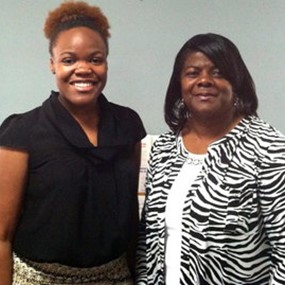What's in a Name?
“What’s in a name? That which we call a rose by any other name would smell as sweet.”
In William Shakespeare’s immortalized classic, Romeo was willing to denounce his family’s name and abandon his wealth to be with his one true love, Juliet. Their families’ age-old rivalry forbade the young lovebirds’ union. Each member bore a formidable and permanent oath to despise one another for the generations to come. That is until Romeo and Juliet decided their family names would not change who they were and what they mean to each other.
Today, the city of Selma faces opposing perspectives when it comes to the significance of one name in particular. The boldfaced letters dripping tears of rust on the archway of the city’s entrance has one group answering the famous Shakespearean query. In February of this year, Students UNITE, a civil rights and advocacy organization for ages 16 to 25, started a petition to change the name of the Edmund Pettus Bridge.
Stretching from one bank of the Alabama River to the other, the 75-year-old historical treasure serves as a symbol of the fight for African American voting rights and the Civil Rights Movement. I have driven across the Edmund Pettus Bridge numerous times in the past. With each pass, I am overcome with nostalgic visuals of what took place on March 7, 1965, yet I cannot remember ever being taught who Edmund Pettus was.
So, what’s in a name?
Edmund Pettus was considered a distinguished man during his lifetime. He was born into an America where slavery was legal, and a white supremacist society was the irrefutable standard. He attempted to preserve that standard during his tenure as a lawyer, general in the Confederate army and U.S. senator.
Today, we hold titles like senator and general up as admirable, but there was one title Pettus donned that has made many cringe when they look at the structure where “Bloody Sunday” took place. In 1877, Pettus was appointed as Grand Dragon of the Alabama chapter of the Ku Klux Klan.
In celebration of its construction in 1940, the bridge was referred to as “another epoch in growth and advancement of Dallas County” and “the answer to “The March of Progress” according to Smithsonian Magazine.
“Bloody Sunday” marked the reversal of the South’s view on civil rights equality. In essence, the foot soldiers that risked their lives on March 7, 1965, helped redefine the bridge’s meaning. Since then, the bridge has long stood as the pride and joy of the city of Selma, but some feel the bridge is marred by its name.
Students UNITE are hoping to replace Edmund Pettus’ name with one that identifies with values that coincide with the direction Selma is headed today. The petition has garnered over 180,000 signatures since its inception on Change.org.
But would a name change matter?
The city’s first African American mayor, James Perkins, doesn’t believe so. He said the Edmund Pettus Bridge represents the contradiction between America’s past and what the Constitution says. He suggested that if you change the name of the bridge, you change the meaning of the bridge, in a statement he made to Al.com.
Both sides to this name dilemma have compelling arguments about why or why not the bridge’s name should be changed.
Despite the controversy, the Edmund Pettus Bridge went up against 19 other locations across the South to hold the title of Best Historic Southern Attraction. To be in the contest, a part of USA Today’s 10 Best Readers Choice competition, is great publicity for Selma. The recognition encourages people to visit the city and enjoy a trip back in time to both the Civil Rights and Civil War eras.
Again, what’s in a name? I believe whether the bridge’s name is changed or remains the same, the name that matters the most is the name of the city in which it stands: Selma.
Tags: Selma

